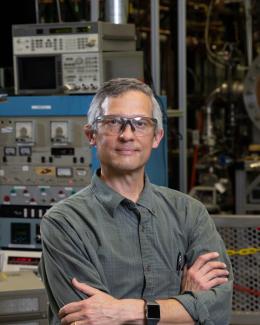Abstract
Electron Bernstein Wave (EBW) heating is important for high-beta plasma experiments and will be used for heating over-dense plasmas on TJ-II. TJ-II is a medium sized Heliac operating at CIEMAT in Madrid, whose plasmas are created and heated by ECH via two 300 kW gyrotrons at second harmonic X-mode (53.2 GHz), with additional heating provided by two neutral beam injectors. Theoretical work has shown that the most suitable scheme for launching EBWs in TJ-II is O-X-B mode conversion, which has acceptable heating efficiency for central densities above 1.2 x 1019 m-3.[1] A system based on a 28 GHz-100ms diode gyrotron will be used to deliver 300 kW through a corrugated waveguide. The microwave heating beam will be directed and focused by a steering mirror located inside the vacuum vessel. Prior to the heating experiments, measurement of the thermal EBW emission (EBE) from the plasma is being made to help determine the optimum launch angle for EBW mode conversion, and also to provide an indication of the electron temperature evolution in over-dense plasmas. A dual-polarized quad-ridged broadband horn is used to measure the EBW emission and polarization at 28 GHz. Initial measurements indicate that the emission in under-dense plasmas corresponds to oblique electron cyclotron emission (ECE) and then converts to EBE when the plasma becomes over-dense during neutral beam injection.



